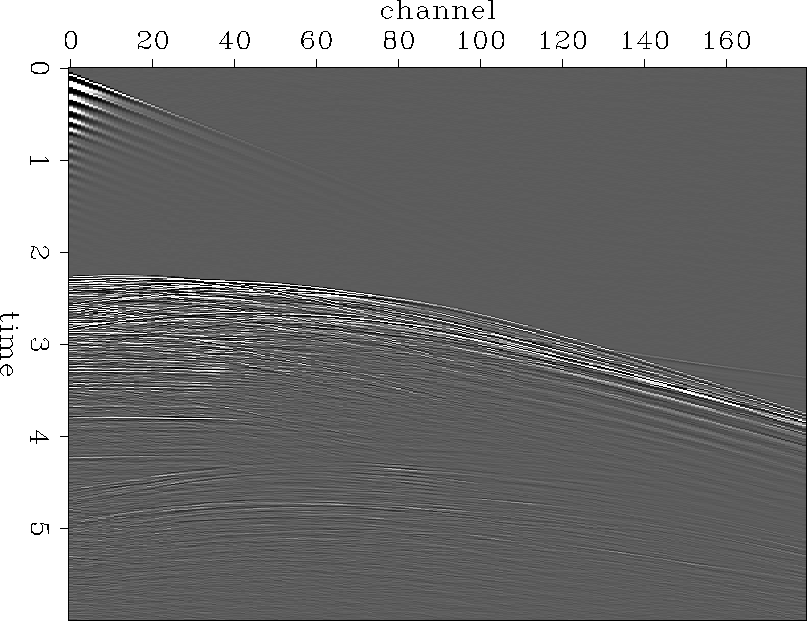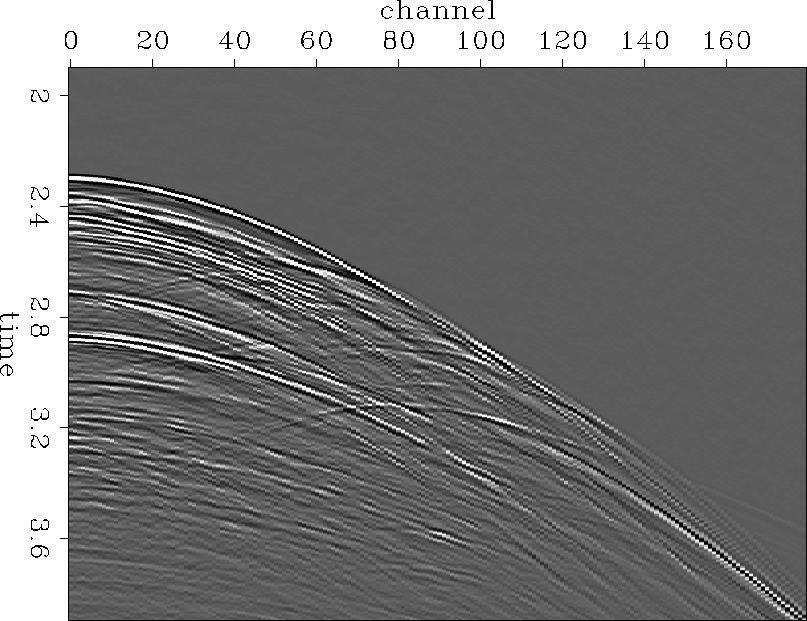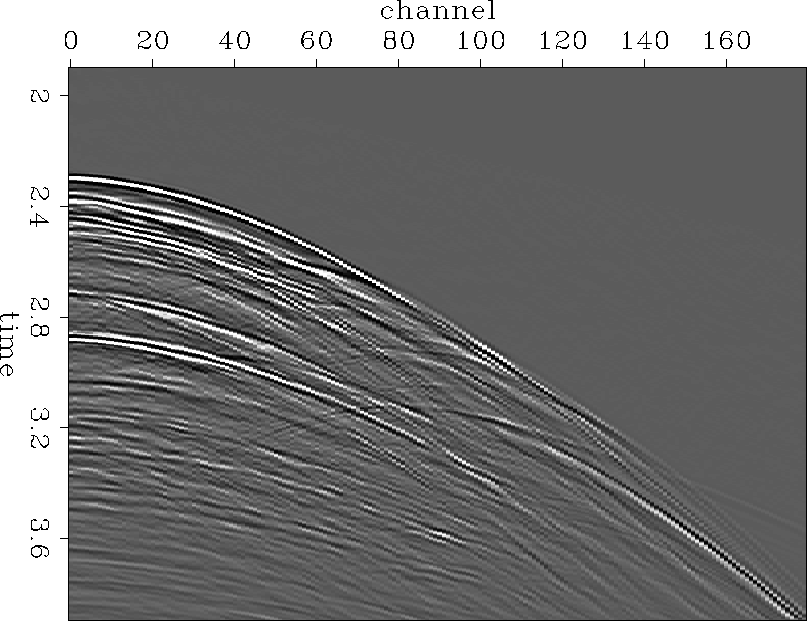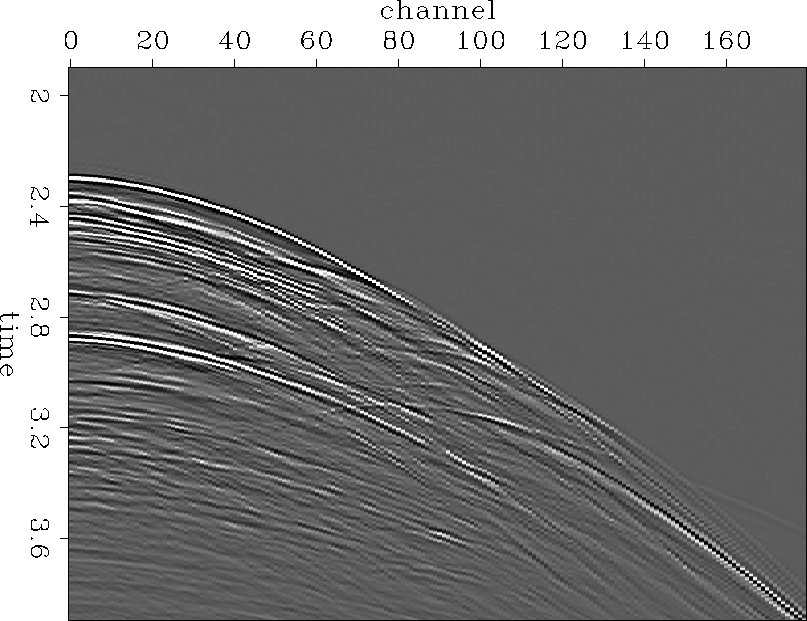 |
Figure 6 Sample shot gather from the original data.
 |
As a test, we interpolate both ways. Figure 355start.shot shows a closeup of the input, zoomed in on regions between 2 and 4 seconds in Figure 355exshotgather. Figure 355shotsub.out.shot shows the interpolation result on common shot gathers. Figure 355recsub.out.shot shows the interpolation result on simulated common receiver gathers. The traces shown in Figure 355recsub.out.shot are the same as in the other figures, but traces were zeroed in a checkerboard pattern (as in Figure traces-crg) to simulate the pattern of known and missing traces that arises from forming common receiver gathers after throwing out every second shot. In the other case, where the data are just representing shot gathers, every second slice in the cube was zeroed (as in Figure traces-csg).
|
355start.shot
Figure 7 Portion of a marine shot gather. Part of the original data that is subsampled and interpolated to make the next figures. |  |
|
355shotsub.out.shot
Figure 8 Portion of an interpolated marine shot gather. This is the result of subsampling the shot axis and interpolating with the data sorted as shot gathers. |  |
|
355recsub.out.shot
Figure 9 Portion of an interpolated shot gather. This result simulates subsampling the shot axis and interpolating with the data sorted as receiver gathers. |  |
The most obvious difference between the results in Figures 355shotsub.out.shot and 355recsub.out.shot is in the events which dip back towards zero offset. The data which are interpolated in slices have lost most of these events, while the data which are interpolated in the checkerboard pattern restored those somewhat. In the best case, just under 95% of the variance of the original data is predicted.
An unexplored alternative to resorting the data may be to rotate the filters by 45 degrees.